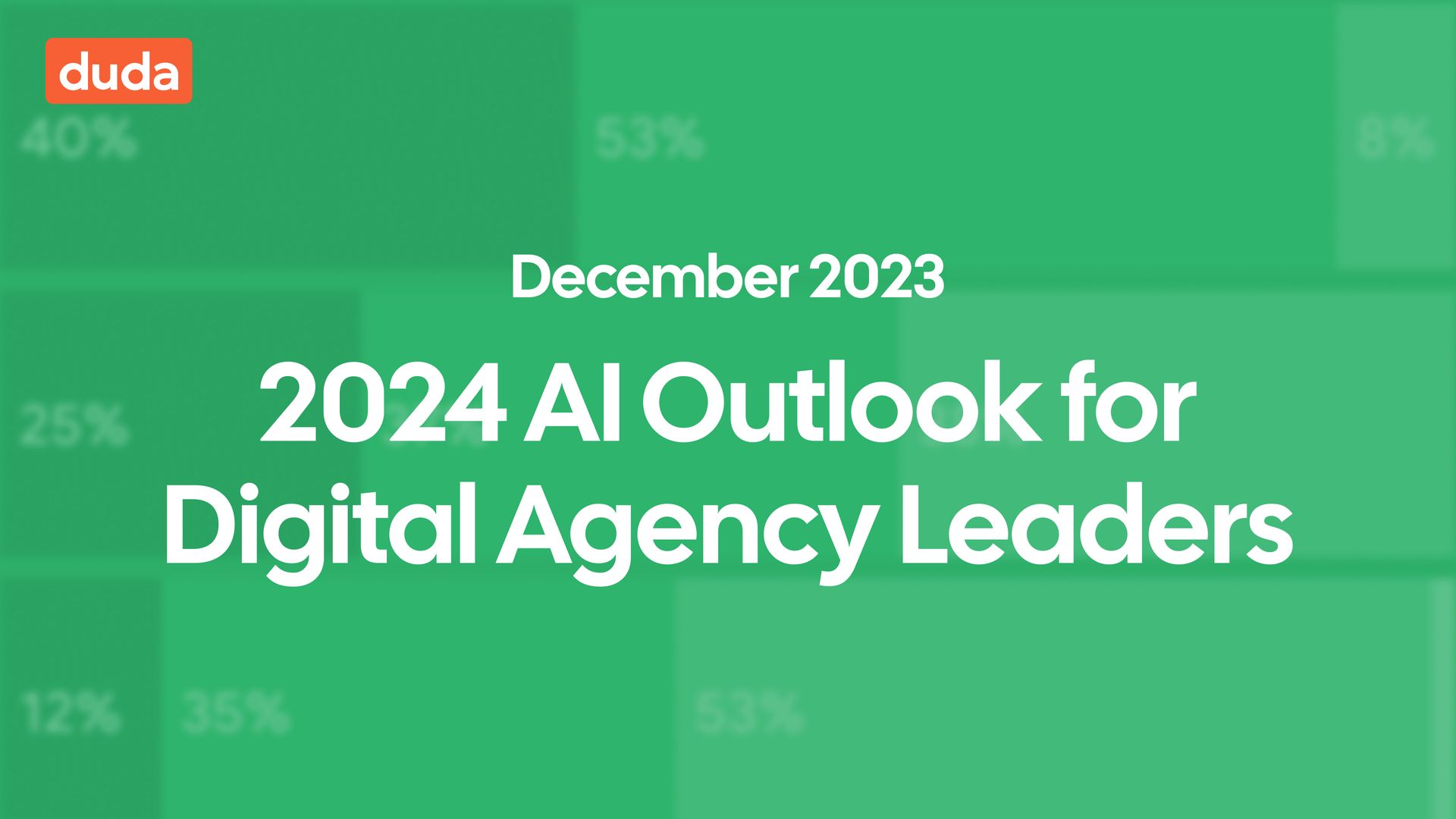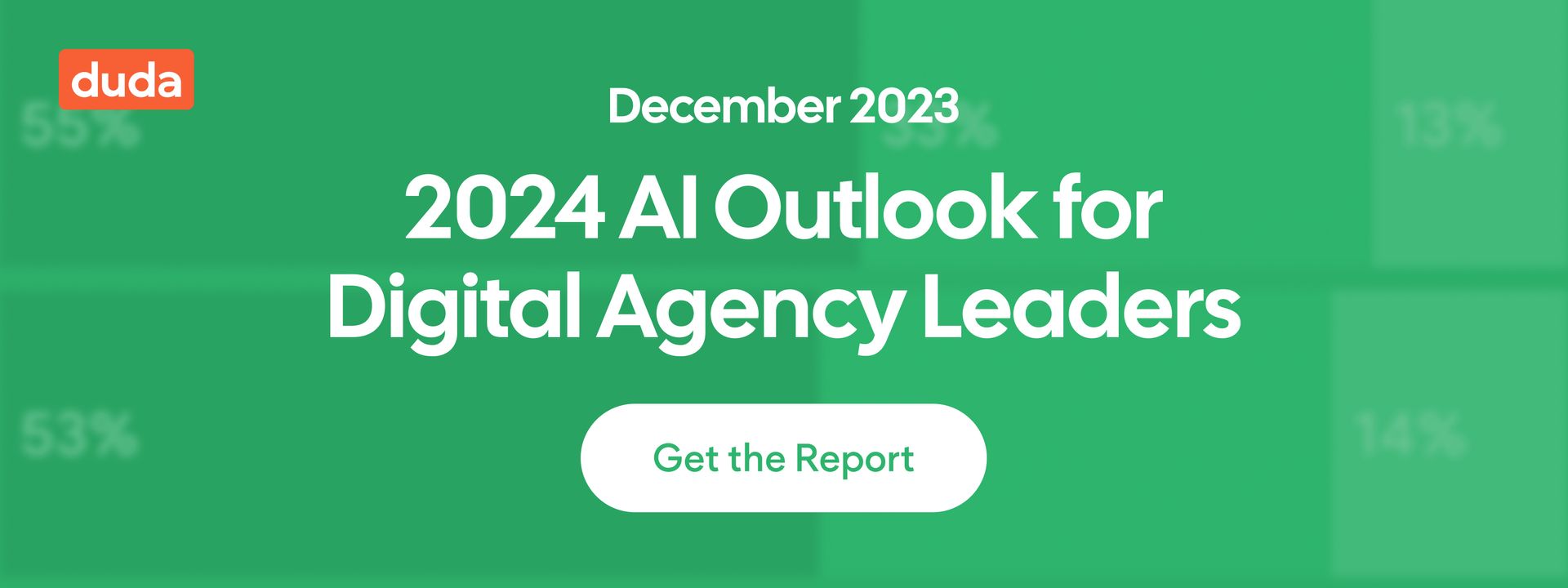With
all the buzz around AI, we reached out to 200 digital agency leaders worldwide to understand how they’re using AI today, the impact it’s had on their businesses, and their plans for AI in 2024. We found that, as generative AI took the digital world by storm in 2023, digital agencies jumped on board to leverage this tech–with immediate value to their businesses. Going into 2024, the future of AI is bright, as agency leaders expect even greater value and positive business impact in the upcoming year.
Key findings
1. The fear of missing out is real, driving wide AI adoption
100% of the agency owners surveyed are already using AI in their web-building processes, underscoring just how fast and widespread AI adoption was in 2023. Despite quickly jumping on board with AI, 84% of survey respondents express concern about keeping pace with AI developments in 2024, highlighting the sense of urgency agency owners feel to stay competitive in a digital landscape that is evolving faster than ever.
2. Agency owners expect AI to transform how they do business
Unsurprisingly, 89% of agency owners expect AI to help them scale their businesses faster, and 87% expect AI to help them speed up time-consuming workflows like content creation. What’s more, agency owners report that they expect AI to impact how they go to market, with 86% indicating that they believe AI will enable them to go down market and serve more diverse clients by the end of 2024. This is perhaps one of the most exciting findings of the survey: that agency owners feel empowered by AI to expand their total addressable market (TAM), scale their processes to take on more clients, and ultimately, see their revenue soar.
3. AI already yields positive results for agencies and clients
Agency owners are already seeing measurable impact from their use of AI, particularly in terms of cost savings, operational efficiency, and client satisfaction. Cost savings is the top metric for evaluating AI success, with 32% of agencies focusing on this metric and all agencies reporting some level of AI-driven cost savings in 2023. Agency owners also report that they’re already seeing good results when using AI to update existing web pages’ content (59%), generate content for new pages (55%), create visuals for client websites (53%), and optimize sites for SEO (40%).
This report could not have come at a better time; not long ago, we
launched our new native AI-powered SEO tool, as part of our AI Assistant. This revolutionary, industry-first tool, generates SEO metadata for entire sites in seconds from a single dashboard. Coupled with our AI Assistant for content creation, which allows you to instantly generate high-quality content right within the Duda platform, there’s really nothing you can’t do with Duda website builder.




 Update
Update


